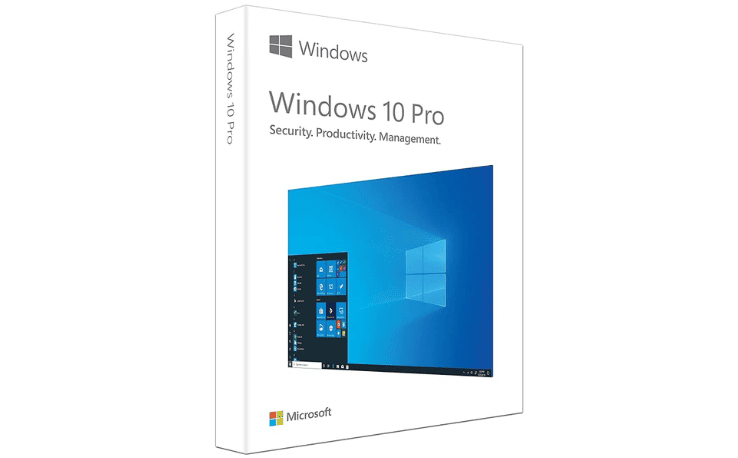Windows 10 64 Bit remains one of the most popular operating systems for PC users around the world. Whether you are a student, gamer, or professional, this version of Windows offers speed, stability, and compatibility for both old and modern hardware. In this guide, we’ll explore everything you need to know about Windows 10 64 Bit, including its features, system requirements, download process, and installation steps.
What is Windows 10 64 Bit?
Windows 10 64 Bit is the 64-bit edition of Microsoft’s Windows 10 operating system. Compared to the 32-bit version, it allows your computer to use more RAM (Random Access Memory), making it faster and more efficient for heavy tasks such as gaming, video editing, and software development.
If your computer supports 64-bit architecture, installing Windows 10 64 Bit is the best choice to unlock its full performance potential.
Key Features of Windows 10 64 Bit
- Here are some of the main features that make Windows 10 64 Bit popular among users:
- Faster Performance – Handles larger files and multitasking better than 32-bit versions.
- DirectX 12 Support – Perfect for gamers who want smooth graphics and improved FPS.
- Improved Security – Comes with Windows Defender, BitLocker, and regular updates.
- Cortana Voice Assistant – Helps with quick searches and productivity tasks.
- Multiple Desktops – Organize your work with Virtual Desktops.
- Compatibility – Supports thousands of apps, drivers, and professional software.
- Updates and Support – Still receives security patches from Microsoft.
Why Choose Windows 10 64 Bit Over 32 Bit?
- The 64-bit architecture offers several advantages over the 32-bit version:
- Can use more than 4GB RAM (essential for modern PCs).
- Supports 64-bit apps and drivers, which are faster and more reliable.
- Ideal for gaming, 3D rendering, video editing, and programming.
- Future-proof compared to outdated 32-bit systems.
- If your PC has at least 4GB RAM or higher, Windows 10 64 Bit is the recommended option.
System Requirements for Windows 10 64 Bit
Before downloading and installing, check the minimum system requirements:
- Processor: 1 GHz or faster compatible processor (64-bit)
- RAM: 4 GB (minimum) – 8 GB or more recommended
- Storage: 20 GB free space (minimum)
- Graphics: DirectX 9 or later with WDDM 1.0 driver
- Display: 800×600 resolution
Windows 10 64 Bit ISO Download
To install Windows 10 64 Bit, you need the official Windows 10 ISO file. Microsoft provides the download via its Media Creation Tool.
Steps:
- Visit the official Microsoft Windows 10 download page
- Download the Media Creation Tool.
- Choose Create Installation Media (USB, DVD, or ISO file).
- Select Windows 10 64 Bit.
- Save the ISO file to your PC.
How to Install Windows 10 64 Bit
Here’s a step-by-step installation process:
- Create a Bootable USB Drive using Rufus or the Media Creation Tool.
- Insert the USB drive and restart your PC.
- Enter BIOS/UEFI and set USB as the boot device.
- Select Install Windows and follow on-screen instructions.
- Choose Custom Installation for a fresh install.
- Select your partition and install Windows 10 64 Bit.
- Complete the setup and sign in with a Microsoft account.
Windows 10 64 Bit Editions
Microsoft offers different editions of Windows 10 64 Bit to meet different needs:
- Windows 10 Home – Best for personal and everyday use.
- Windows 10 Pro – Includes business tools like BitLocker, Remote Desktop, and Group Policy.
- Windows 10 Enterprise – Designed for large organizations.
- Windows 10 Education – Suitable for schools and universities.
Advantages of Windows 10 64 Bit
- Uses large memory effectively.
- Runs modern applications smoothly.
- Best choice for professionals and gamers.
- Improved system stability.
- Wide hardware and driver support.
Windows 10 64 Bit vs Windows 11
With the release of Windows 11, many users wonder if they should upgrade. Here’s a quick comparison:
- Windows 10 64 Bit – More stable, compatible with older hardware, still supported.
- Windows 11 – New design, better for modern PCs, but requires stricter hardware requirements.
If your PC is older, Windows 10 64 Bit remains the best choice.
Tips for Better Performance
- Keep your system updated with the latest patches.
- Install 64-bit versions of apps for maximum speed.
- Use an SSD for faster boot and load times.
- Disable unnecessary startup programs.
- Use Windows Defender or a trusted antivirus for security.
Frequently Asked Questions (FAQs)
1. Can I upgrade from Windows 10 32 Bit to 64 Bit?
Yes, but you must do a clean installation since you cannot upgrade directly from 32 Bit to 64 Bit.
2. Is Windows 10 64 Bit still supported?
Yes, Microsoft continues to provide security updates for Windows 10 until October 2025.
3. How do I check if my PC supports Windows 10 64 Bit?
Right-click on This PC → Properties and check under System Type.
4. Do I need a product key for installation?
Yes, you need a valid Windows 10 license key for activation.

